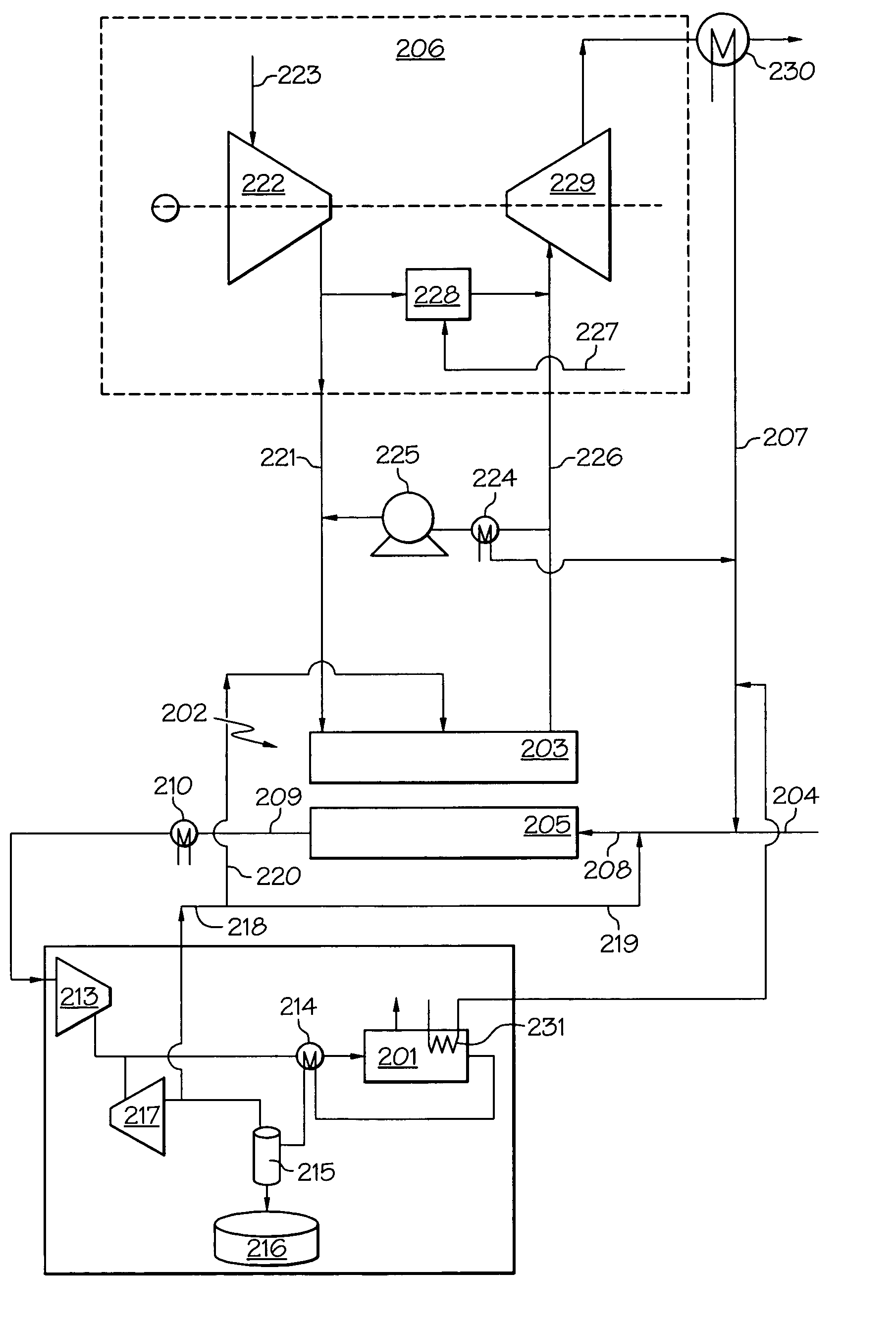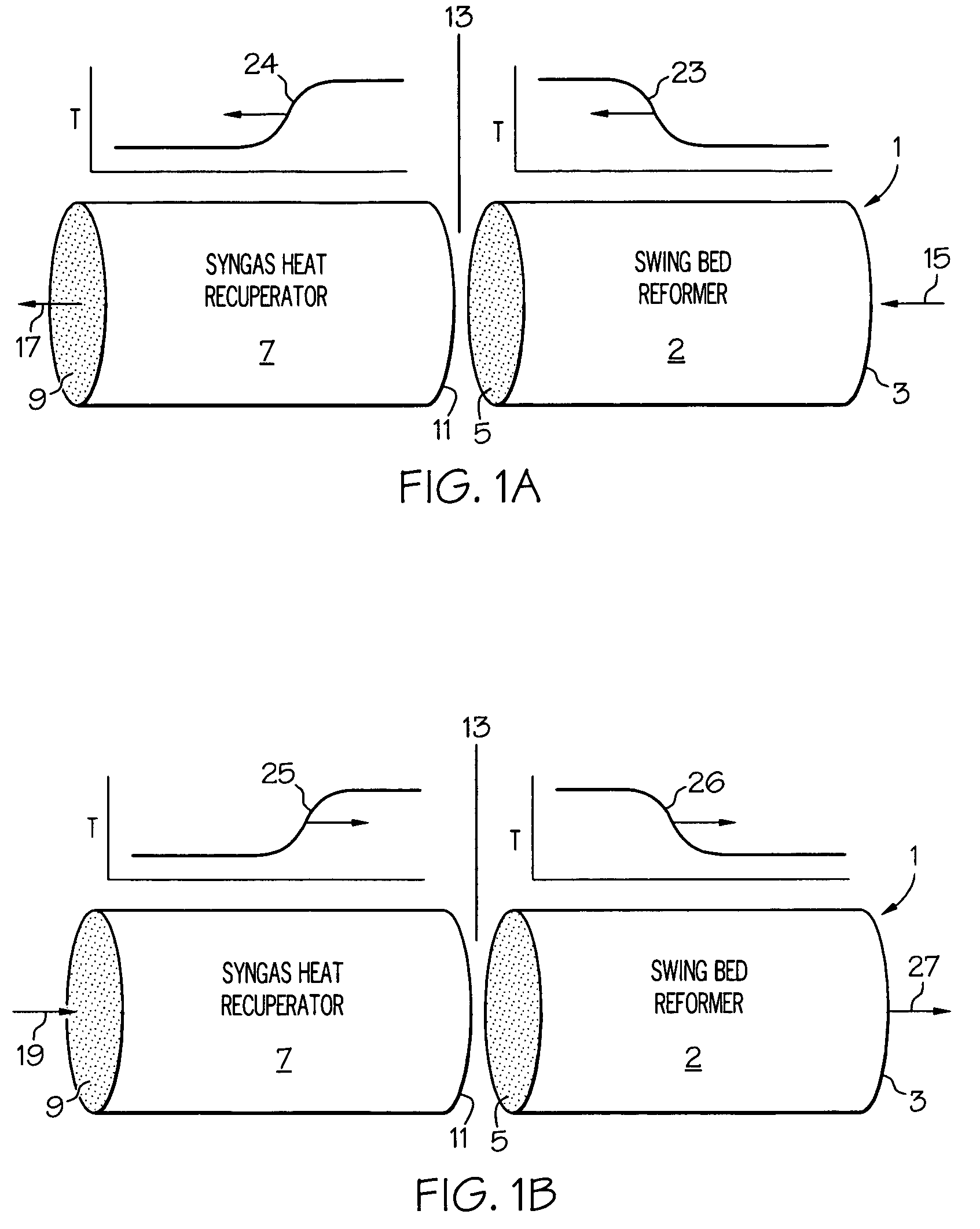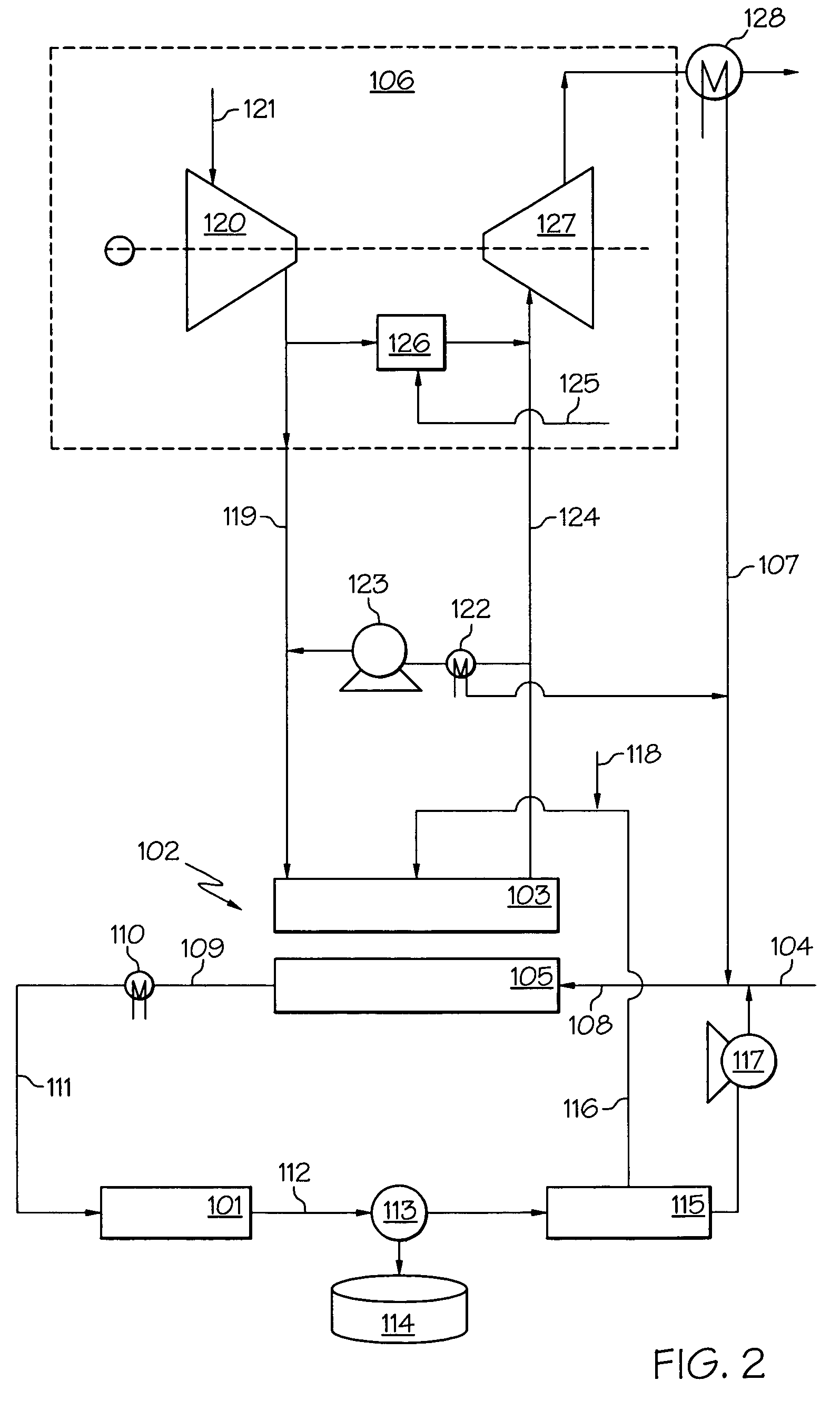Methanol manufacture using pressure swing reforming
a technology of methanol and reforming, which is applied in the field of methanol manufacture, can solve the problems of high heat generation, low productivity, and high cost of synthesis, and achieve the effect of facilitating the production of high pressure synthesis gas
- Summary
- Abstract
- Description
- Claims
- Application Information
AI Technical Summary
Benefits of technology
Problems solved by technology
Method used
Image
Examples
example 1
[0112]This Example provides a computer simulation of the integrated process shown in FIG. 2 using a General Electric Frame 9E Gas Turbine as the turbine 106 and assuming additional fuel is consumed in the burner 126 to provide a heat value flow to the turbine of 629 MBTU / hr. Heat values, as used herein, represent stream heat of combustion, on a lower heating value basis.
[0113]The pressure swing reformer 102 is operated as a pair of reactors, each alternating between 15 seconds in the regenerating stage 103 and 15 seconds in the reforming stage 105. Reforming and recuperation zones include a packing comprising a 1200 cell / in2 (186 cell / cm2) honeycomb monolith having a wall thickness of 7 mil (0.18 mm), a wetted area of 41 cm−1 and a bulk volumetric heat capacity of 0.23 cal / cc° C. The reforming zone comprises two thirds of the total bed, and comprises a rhodium catalyst supported on the honeycomb monolith. The space velocity during reforming stage, on a C1 hydrocarbon basis, is 4000 ...
example 2
[0120]This Example provides a computer simulation of the integrated process shown in FIG. 3 using a General Electric Frame 9E Gas Turbine as the turbine 206 and assuming additional fuel is consumed in the burner 227 to provide a heat value flow to the turbine of 923 MBTU / hr.
[0121]The pressure swing reformer 202 is operated as a pair of reactors, each alternating between 15 seconds in regenerating stage 203 and 15 seconds in reforming stage 205. Reforming and recuperation zones include a packing comprising a 1200 cell / in2 (186 cell / cm2) honeycomb monolith having a wall thickness of 7 mil (0.18 mm), a wetted area of 41 cm−1 and a bulk volumetric heat capacity of 0.23 cal / cc° C. The reforming zone comprises two thirds of the total bed, and comprises a rhodium catalyst supported on the honeycomb monolith. The space velocity during the reforming stage, on a C1 hydrocarbon basis, is 5000 hr−1.
[0122]Methane is fed through line 204 to the reforming stage 205 at a rate of 14,309 kgmole / hr an...
example 3
[0128]This Example provides a computer simulation of the integrated process shown in FIG. 4 using a General Electric Frame 9E Gas Turbine as the turbine 206 and assuming additional fuel is consumed in the burner 227 to provide a heat value flow to the turbine of 923 MBTU / hr.
[0129]The pressure swing reformer 202 is operated as a pair of reactors, each alternating between 15 seconds in regenerating stage 203 and 15 seconds in reforming stage 205. Reforming and recuperation zones include a packing comprising a 1200 cell / in2 (186 cell / cm2) honeycomb monolith having a wall thickness of 7 mil (0.18 mm), a wetted area of 41 cm−1 and a bulk volumetric heat capacity of 0.23 cal / cc° C. The reforming zone comprises two thirds of the total bed, and comprises a rhodium catalyst supported on the honeycomb monolith. The space velocity during the reforming stage, on a C1 hydrocarbon basis, is 5000 hr−1.
[0130]Methane is fed through line 204 to the reforming stage 205 at a rate of 14,309 kgmole / hr an...
PUM
| Property | Measurement | Unit |
|---|---|---|
| pressure | aaaaa | aaaaa |
| pressure | aaaaa | aaaaa |
| pressure | aaaaa | aaaaa |
Abstract
Description
Claims
Application Information
 Login to View More
Login to View More - R&D
- Intellectual Property
- Life Sciences
- Materials
- Tech Scout
- Unparalleled Data Quality
- Higher Quality Content
- 60% Fewer Hallucinations
Browse by: Latest US Patents, China's latest patents, Technical Efficacy Thesaurus, Application Domain, Technology Topic, Popular Technical Reports.
© 2025 PatSnap. All rights reserved.Legal|Privacy policy|Modern Slavery Act Transparency Statement|Sitemap|About US| Contact US: help@patsnap.com



